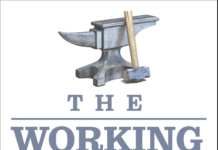
The Employment and Manufacturers Association and Business New Zealand have released the annual Mood of the Boardroom survey in association with the New Zealand Herald.
FIRST Union is concerned about the lack of statistical rigour in the surveys. The options on the question regarding business opinion on the ERA are geared towards a negative result. In statistics this technique elicits a response bias because these are leading questions to a particular answer (there is no neutral or ‘not concerned’ answer). Business New Zealand has apologised for the survey question.
FIRST Union Secretary Dennis Maga says the surveys lack simple validity measures so should not be taken seriously.
“The options on the Mood of the Boardroom survey are all negative, there is no option for companies to say what part of the bill they are happy with, or that they are not concerned by the proposed changes. Their questioning is far from statistically sound, in fact it’s completely geared towards the answers they want.”
Mr Maga says it shows the organisation is trying to push old and dated business models.
“It shows they’re becoming desperate, workers just might get a fair deal and they’re going to desperate measures to stop that. I don’t take these surveys seriously and for the sake of the wellbeing of workers and the New Zealand economy neither should anyone else.”
Mr Maga says the EMA and Business NZ are blowing the business community’s concerns out of proportion to suit their own agendas.
“The EMA is ignoring the opinions of progressive businesses, businesses that we are seeing more and more of. The EMA and its affiliate Business NZ are trying to enforce a system that doesn’t work, that hoards money away from the everyday hard-working New Zealander. It is important we get employment law right, for every New Zealander.”
He says the EMA only considers one side of what makes an economy run well.
“These organisations only represent half of the economy, whereas production and distribution, in other words workers and their spending power, make up the other half of a healthy economy, one that’s flush with spending power.”




